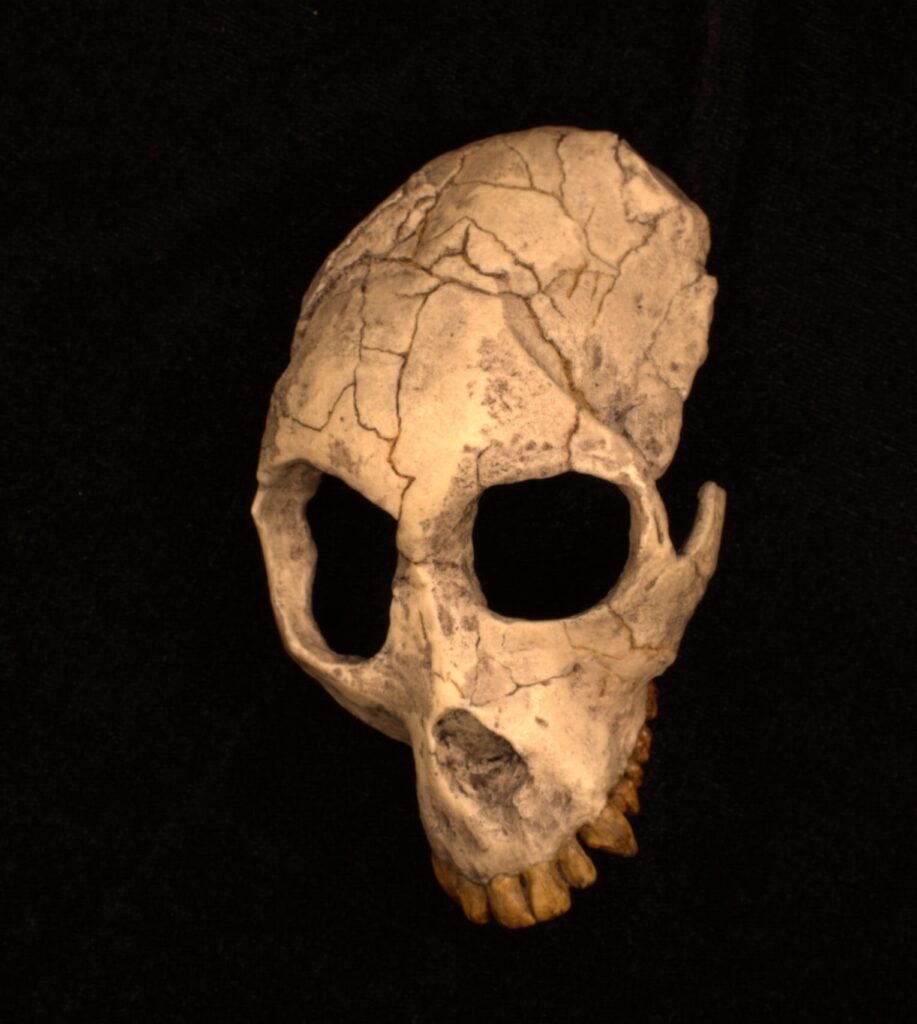Proconsul africanus
AAC Catalogue Number: 2004.11.37
Dates: 14-23 million years ago
Geographic Range: Eastern Africa, likely inhabited rainforests and woodlands.
Anatomical Features:
- No brow ridges, which is dissimilar to modern apes
- Protruding face
- Skeletal structure of limbs similar to monkey
- Apelike (no tail)
- Somewhat larger brains than monkeys of a similar size
- Large thumbs used for grasping
Technology Used: N/A
Diet: The dentition of Proconsul africanus suggests that this species predominantly ate fruits.
Other Info:
- Proconsul genus shows evidence for significant sexual dimorphism.
- Proconsuls were likely arboreal.
Description from Bone Clones:
“14 to 23 MYA. The Proconsul africanus skull was discovered by Mary Leakey in 1948 on Rusinga Island, Kenya. This specimen, based on the 1948 Leakey discovery, is the most complete Proconsul africanus cranium to date. Alan Walker reclassified Proconsul africanus, a Miocene hominoid, as heseloni in 1993. The skull is characterized by the absence of browridges (unlike in modern apes) and the presence of a projecting face. Members of this genus are considered dental apes because their teeth possessed ape-like features. Their teeth also indicate that they were primarily a fruit-eating species. On the other hand, their limb skeletons share monkey-like features. The evidence provided by a wide range of skeletal remains points toward considerable variation within the genus Proconsul, their body size extending from the size of a small monkey to a female gorilla. They also inhabited a variety of environments from rainforests to open woodlands.”

